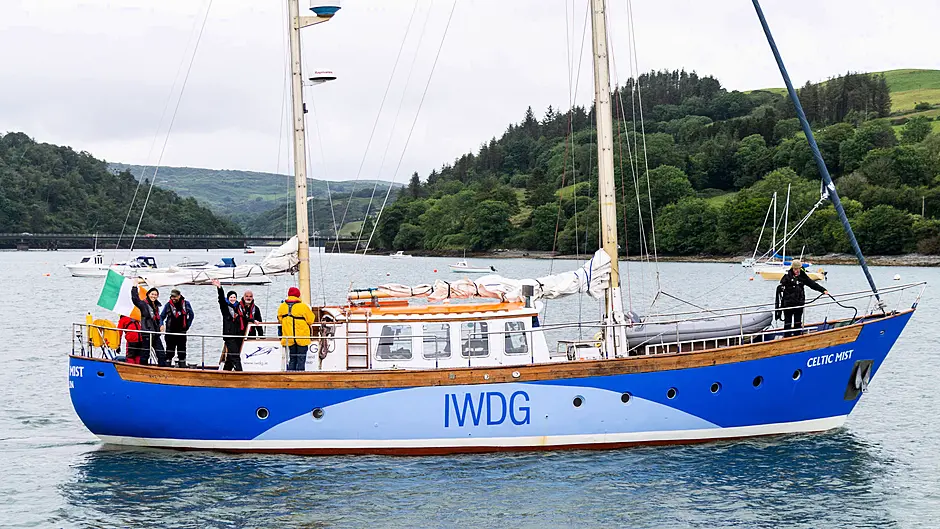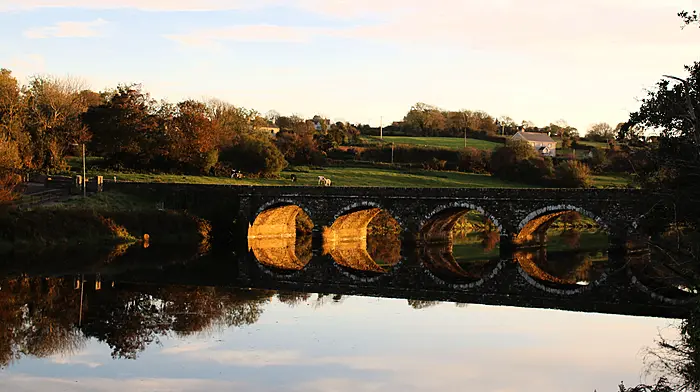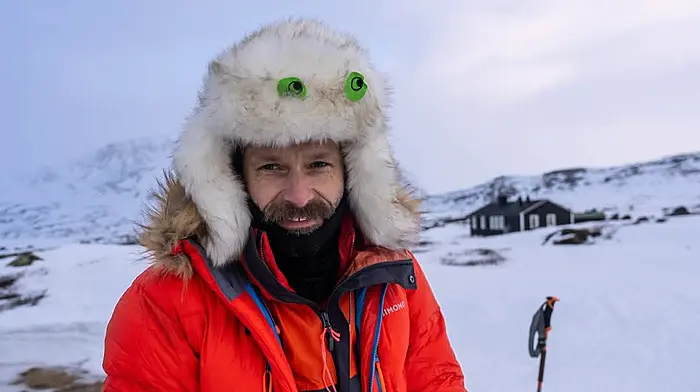Fair Seas, the umbrella body for marine environmentalists, hosted a meeting to outline the upcoming Marine Protected Areas Bill. The public must lobby politicians to ensure the best outcome for our marine life, the audience was told

THERE is optimism that at least 10% of Irish coastal waters will become designated areas of ‘strict protection’ under the upcoming Marine Protected Areas (MPA) Bill, a meeting in West Cork was told.
It is hoped that at least 30% of our waters will receive a general ‘protected’ status, members of the Irish Whale and Dolphin Group (IWDG), told the meeting, which was organised by Fair Seas in Skibbereen.
Fair Seas is the umbrella body for several Irish environmental bodies, including Irish Wildlife Trust, BirdWatch Ireland, Sustainable Water Network, IWDG, Coomhola Salmon Trust, Irish Environmental Network and Coastwatch. The packed meeting, held in the West Cork Hotel on Friday, November 3rd, was attended by interested parties, including environmentalists and representatives of the fishing industry.
IWDG science officer Becky Dudley said that Fair Seas’ ambition was to see Ireland become a world leader in marine protection.
She said an IWDG survey taken from Dublin to Kilrush around the south coast this summer showed 494 sightings of 11 different species, over 350 hours. This included 29 harbour porpoises, which may imply the species is in decline. Just five of these were spotted in Roaring Water Bay in West Cork.
There were 222 common dolphin sightings, 59 minke whales, very few fin whales and no humpback whales whatsoever, she said.
However, it is thought the majority of humpbacks may have moved further north as Mayo, Sligo and Donegal have seen increased sightings in recent years. Some of these species were seen by members of the public outside of the hours being surveyed by crew on the IWDG research vessel, Celtic Mist.
Ms Dudley encouraged the public to sign up to the IWDG website to record sightings, to help improve the data available which can inform policy and legislation for protecting the marine environment.
 IWDG marine policy officer Dr Stephen Comerford addressing the audience at the West Cork Hotel.
IWDG marine policy officer Dr Stephen Comerford addressing the audience at the West Cork Hotel.
IWDG sightings officer Padraig Whooley said it would have been ‘unthinkable’ 20 years ago not to have seen any harbour porpoises in areas of the coast off West Cork.
Ireland is strong on monitoring but poor on marine management, he said. But he was taken to task by a member of the audience after he showed an image of a humpback whale dragging fishing rope. Michael Desmond of the National Inshore Fishermen’s Association said the implication was that fishers were the main cause of marine life casualties when the majority of whale deaths were caused by ship strikes.
Mr Desmond also said that despite the industry being stopped from fishing several species 20 years ago, the deterioration of these species had continued.
There were now 25,000 seals in Irish waters, he added, each one eating four to five tonnes of fish, the equivalent of 100,000 tonnes of fish every year.
In response, Dolf D’hont of the Fair Seas steering committee said that seal culls were controversial and there was also a fear that eliminating seals from the equation would then simply shift the focus to other predators like dolphins and whales, and then seabirds. He said we were not looking at the ‘big picture’ of what is going wrong on a bigger scale.
For example, he said, the conditions for scallops had improved in Bantry Bay in recent years and yet they were still not thriving.
Mr Whooley said it was encouraging to see so many fishers at the meeting as there needed to be ‘broad support’ for the plan to have 30% of Irish waters protected by 2030. He said the prevalence of humpbacks off the Irish coast seems to have increased, though the majority are now off the north west.
Climate change is very likely feeding into this change, he said. He added that 126 whales had been recorded over the years as regular visitors and some of them have been seen as far away as the Dominican Republic, Russia, and the US. November was the peak season for seeing them about 20-25 years ago, but that appears to have shifted to March or April now.
IWDG marine policy officer Dr Stephen Comerford told the meeting that people are ‘very worried about’ offshore wind. He said the first phase was five projects off the east coast, and one off the west and that 2032 to 2033 was the most realistic timeline to achieve phase two.
Inshore fisherman Ken Cashman queried Dr Comerford’s comment that offshore wind was the only way to address the carbon targets for energy production.
‘There is nuclear energy, and that is coming down the tracks,’ said Mr Cashman. ‘In 40 years’ time, will we still have windfarms? I don’t think so.’
Dr Comerford took on board the fears of the fishing industry and others, regarding the impending MPA Bill.
‘In the short term, you will have to exclude people, and compensate people, but in the long term, it will be worth it,’ he said.








